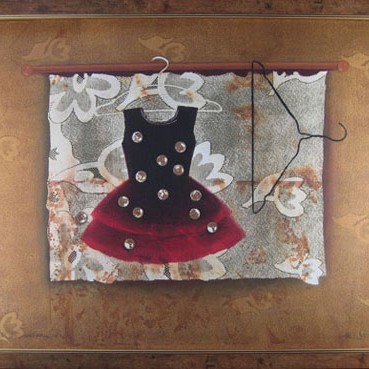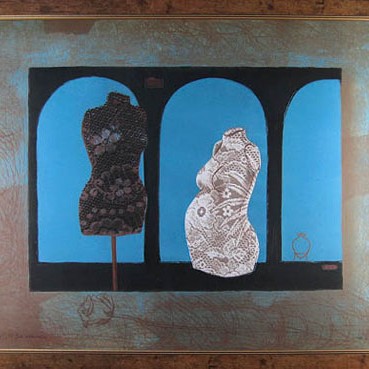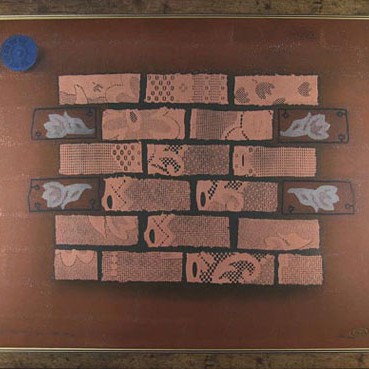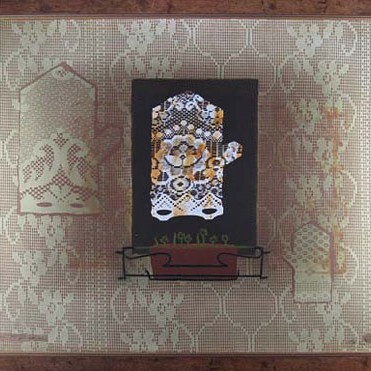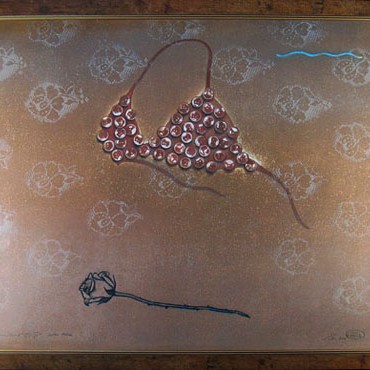Textile art is often regarded as a “feminine” or even a ”housewife-style” of art, with which is in the first range associated handicraft and fabrics that are being referred to as cosy or feminine ones. So according to general understanding the criterion of a good textile artist is a person, who handles textile with especially sophisticated techniques or who offers novel material-related solutions, colours, combinations. Often a textile artist even approaches the art of painting, trying to imitate for instance in carpet weaving colour handling of paintings or offering the colour vision being characteristic only to the art of carpet weaving. The exhibition of Sirje Eelma is a clear counterproof of all of that, as under exploration are not only the form structures of textile, but her patterns are also memory patterns or tears of a wall-paper. Something that is in everyday life just a piece of cloth is on Eelma’s works personal and direct.
Andres Tolts, a classical painter, is most probably one of the best-known “strangers” in textile art, who as already a very young author unexpectedly started to use fabrics, which is regarded undignified for a painter. This was a pop-style move, but Tolts also demonstrated new out-of-form possibilities in the use of textiles that now are also implemented in the art by Eelma. It is not the interesting fabric itself, but for instance the way how clothes of certain patterns (e.g. floral) and certain materials symbolize the Soviet reality – or in case of Sirje Eelma – the Estonian character, nostalgic spirit and personal memory.
In case of such blurry assumptions which actually are being supported by the fact that the artist uses textiles only in a fragmentary manner – exactly in the way memory functions - we can still presume that Eelma does have clearly aesthetic reasons. To be more exact and still by sticking to this fragmentary manner we must realise that Eelma’s approach to textile is principally different than that of a textile artist. She picks only fragments, characteristic moments, only a couple of pattern fractures are sufficient for her for adding her personal interpretations. Eelma acts like a jazz musician, who starts to improvise freely from a random key, adding to it new shades of sounds.
But even though Eelma stands apart from traditional patterns, also this text has mainly been directed towards form-related questions. We should still ask, what is the artist trying to say with this exhibition? This question cannot be answered or can be answered only by quoting Jüri Arrak: tons of questions, kilos of answers. Still we may assume and make our own suggestions by claiming that Eelma’s exhibition is first of all an exhibition about empathy. Because how else could we call this, when a tacky lacy pattern becomes a memory trail. How else to call the way the artist sees the world as an entangled integer. This is not a question of low becoming high, of the promotion of textile to art, but of Eelma’s principal vision of the world as an integer – a romantic, nostalgic, personal, important one. Yes, so it is – for Eelma the world is sufficiently important and significant in order not to make fun of it, and to depict it in as dignified manner as possible, to have a dignified approach also towards materials surrounding it.
.png)
